Cool Stories - KUfan.Com
Main menu:
Cool Stories
Other Stuff
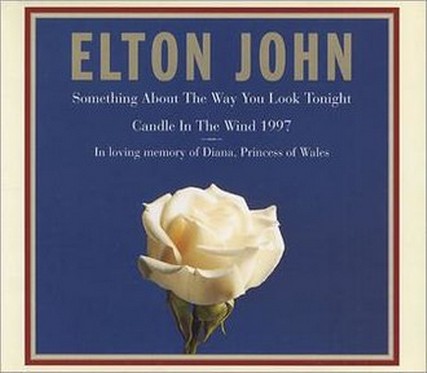
Candle in the Wind
Sir Elton John met Princess Dianna in the early 1980's and became good friends.
In July of 1997, John lost a friend named Gianni Versace, a fashion designer. Princes Dianna was there for her friend to console him at the funeral. Six weeks later, John was in shock when he learned the Princess was killed in a car wreck in Paris. He got a phone call from Richard Branson who said people were writing in the Book of Condolences at St. James Palace and was quoting lyrics from Candle in the Wind and asked if John could rewrite the lyrics and sing it at the funeral. John contacted Bernie Taupin, who wrote the original song and Bernie rewrote the lyrics in a matter of a few hours.
Elton John sang "Candle in the Wind 1997" and later the same day went to a studio to record it. He has refused to ever sing it again unless it was requested by the family. George Martin produced it. He produced a lot of the Beatles music. Many music industry experts predicted the song would become the best selling song of all time. When it was released in the UK, it debuted at #1 and ended up being the all time selling single there. In the USA, it became the second most selling single of all time, trailing only Bing Crosbys' "White Christmas".
Bernie Taupin had written the original Candle in the Wind in 1973 as a tribute to Marilyn Monroe. Both Monroe and Princess Dianna died at the age of 36.
Snoopy vs the Red Baron
That song was released in the fall of 1966 and was a top 10 hit by the end of the year. When the Royal Guardsmen recorded it, they didn't get permission from Charles Shultz, the creator of the Peanuts comic strip where Snoopy lives.
United Features Syndicate (the publisher of Peanuts) sued the Guardsmen, and won, getting all of the publishing revenue generated from the song. Shultz did allow the Guardsmen to record other songs featuring Snoopy.
Just in case the penalty would be that the song must be pulled from air play, the Royal Guardsmen recorded an alternate version called "Squeaky vs. the Black Knight".
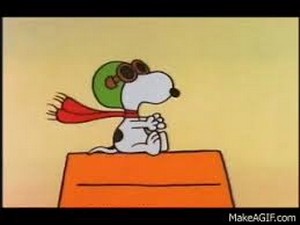

Denver, Kansas ?
Well, almost. Kind of. Sort of. Just about. Actually, it really was for about three years . . .
The Nebraska-Kansas Act of 1854 put the western boundry of the Kansas Territory at the peak of the Rocky Mountians. The boundry stayed that way until Kansas became a state in 1861, at which time the western boundry moved east to where it is today.
Denver was founded in 1858. At that time it was part of the Kansas territory and is even named after Kansas Territorial Governor James W. Denver.
Paul and Steve (Part 1)
Paul Splittorff and Steve Busby of the Kansas City Royals baseball team were best friends and roommates in the early to mid 70's. In June of 1974, Splitt pitched a two hit shutout and after the game, Paul and Steve were discussing it, as well as discussing no hitters in general. Paul made the comment that he had a list of pitchers that were playing at that time that he thought could pitch a no hitter on any given day. That list included Nolan Ryan . . . and Steve Busby. Steve gave his friend hell for including his name because Steve thought it takes too much luck to accomplish it and didn't think he could do it.
The very next night, Steve Busby pitched the second no hitter of his career.

Paul Splittorff
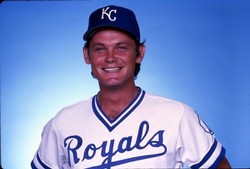
Steve Busby
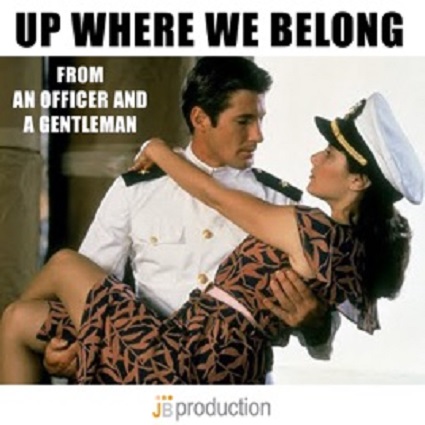
Up Where We Belong
The #1 Song that Almost Didn't Happen
Paramount was about to release "An Officer and a Gentleman" and they wanted a signature song to go with it. Unfortunately, there was no budget left. They pursued the idea anyway and Jennifer Warnes name was mentioned but the director of the film, Taylor Hackford, didn't like that idea because she sounded "too sweet".
Warnes met with him anyway and she suggested she do a duet with Joe Cocker, since she had liked his music and followed his career. Hackford liked that idea. When they approached Cocker with the idea, and afer hearing the demo, he thought it was "dreadful" and offered to sing it by himself. He was talked into Warnes and him both recording the song seperately and then it was spliced together. After hearing that, and after a lot of persuading, Cocker eventually agreed to do the duet.
When they played the duet to the executives of Paramount, they hated it. There was even a $100 bet that it would not be a hit. Those executives checked briefly with others in the industry for a signature song, but with no budget and being out of time, they accepted "Up Where We Belong". It was released in late July of 1982 but was not met favorably, with some radio stations refusing to play it. Some even sent the record back.
After all that, things started looking UP. The movie became pretty popular and the song became more accepted. It entered the Billboard 100 in August and was on the charts for 23 weeks and was #1 for 3 weeks. The following January, it won the Golden Globe Award for the best original song. In February, it won a Grammy for the best pop performance by a duo and in April, it won the Academy Award for the best original song.
~ New Coke ~
Diet Pepsi was introduced in 1964. Coca-Cola didn't come out with Diet Coke until 1982. In the process of the development of the new diet drink, the Coke executives discovered they had a new formula and wanted to change the original formula of Coca-Cola.
By 1984, they decided to go ahead with it and developed a comprehensive ad campain to introduce the new flavor.
That campain was given the name of "Project Kansas".
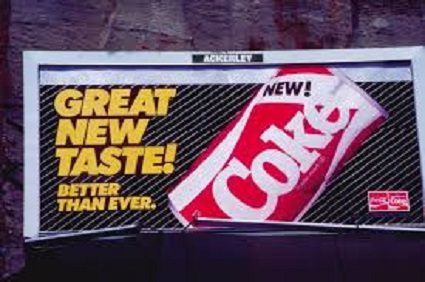

Bread Commercials that Led to
the Most Christmas albums Ever Sold
Makes sense, doesn't it?
In the 1970's, a couple of guys (Bill Fries and Chip Davis) working at an ad agency put together a series of bread commercials. The commercials were like a mini soap opera that featured a truck driver, his faithful old dog, Sloan, and a waitress named Mavis. The commercials became so popular that people were calling the TV stations wanting to know when the next new commercial would be out. They were so popular, the guys at the ad agency released an album, and C. W. McCall was a star. Bill Fries was the voice of C. W. McCall and Chip Davis wrote the music, and afer a while they split up. Fries went on to pursue his music career, Chip Davis stayed behind and opened a recording studio.
Davis started recording music for retailers of stereo systems so they could show off their audio equipment. It wasn't long before people started asking who's doing the music, cuz it was pretty good. So, he released an album, Fresh Aire. Then came Fresh Aire II, and then Fresh Aire III, Fresh Aire IV, and they were becoming pretty popular. So, he released a Christmas album, Mannheim Steamroller Christmas, and it was a phenominal success. It was followed by A Fresh Aire Christmas, then Christmas in the Aire. Chip Davis' Mannheim Steamroller Christmas albums have gone on to outsell all other Christmas albums COMBINED.

The Johnny Carson
Theme Song
Theme Song
When Johnny Carson found out he would be the new host for the Tonight Show, he knew he needed a theme song. He got in touch with Paul Anka, someone who he had worked with before. Anka rewrote an Annette Funicello song that he had written for her, called "It's Really Love", and presented it to Carson.
Unfortunately, the Tonight Show band leader at the time, Skitch Henderson, was enraged because Carson wanted to use a tune written by a 20 year old kid. Paul Anka decided to let Johnny write some lyrics for the new song, and let Carson get credit for it along with half the royalties every time the theme song was played.
Over the next 30 years, Paul Anka has estimated that the theme song was played more than 1 million times and that him and Carson EACH got a royalty check EACH YEAR for an average of $200,000.


Paul Splittorff Steve Busby
Paul and Steve (Part Two)
Paul Splittorff and Steve Busby were best friends and roommates. Busby was called up from the minor league in 1972. In his third game, in California where he grew up and his parents watching his first Major League game, he came to bat with the bases loaded . . . and hit a grand slam home run ! ! ! But wait, appearantly the first base umpire had called time out. Someone was yelling at him from the Royals dugout about a previous play, and the umpire ended up ejecting that player. During the commotion, the Royals coach and another player were also ejected.
When play resumed, Busby got a single and knocked in two runners. He ended up with three hits and two RBIs in that game, the third game in his career. That would be the offensive stats for his entire career, because the next season the designated hitter rule went into effect in the American League and pitchers didn't bat any more (unless it was the World Series, of course).
Several years later, while Busby was recovering from shoulder surgery, Splittorff went to the hospital to visit his Buddy. It was then that Split confessed to his best friend that it was HIM that was chirping at the umpire while hiding behind another player! It was his best friend that cost Busby his grand slam!

The 27th Letter
of the Alphabet
The "&" sign has it's roots clear back to about the first century A.D.
Writers of the time would write in cursive and put the "E" and "T" together for a shortcut. ET is "and" in Latin.
The name "ampersand" is relativaly new and came about from slurring some words together. It use to be common when saying the alphabet, when a letter is spoken that can be used as a word, like "a" or "i", it was said with the latin word of "per se". So it would sound like "a per se a", or "I per se I".
When the "&" sign became part of the alphabet in about the 16th century or so, and when the alphabet was spoken, it would sound like ". . . X, Y, Z, & per se and" which over time, got slurred together to become "ampersand".
Somewhere in the late 19th century, the "&" sign was dropped from the alphabet.
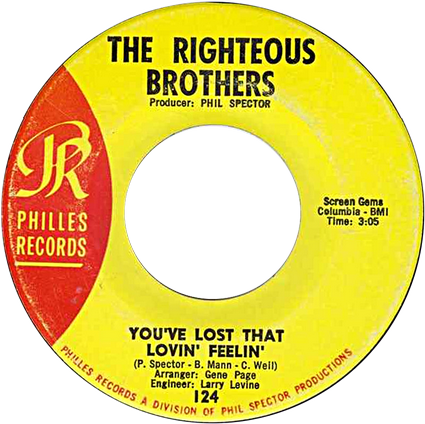
The 3 Minute Song
Well, Sometimes . . .
During the roaring 20's, when the 10", 78 rpm record became pretty much standard, the average song was about three minutes long. You could fit a longer song on it, but that would mean the grooves of the record would be closer together and that would make sound quality suffer. So, a three minute song became the standard.
That rule seemed to still apply in the 60's and 70's. If you were a musician and wanted your single played on the radio, your song had to be close to three minutes or less or it wouldn't get played. Longer songs meant there was less time per hour for radio stations to play their beloved commercials.
There were a few exceptions of course. "Hey Jude" is over six minutes long, but hey, that's the Beatles. Then there was the sly producer Phil Spector, who put on the record label that the Righteous Brothers' song of "You've Lost that Lovin' Feeling" was 3:05 instead of the ACTUAL time of 3:45.
Since it had the shorter playing time on the label, it got a lot of air play on the radio. A LOT of air play. So much so, that it became the most played song on American radio and television in the 20th century.
The Mayo Clinic
In 1883, a violent F5 tornado struck Rochester, Minnesota. The killer twister had a track 25 miles long and nearly reached 1 mile wide. It killed 37, injured around 200, and caused around $700,000 damage. The tremendous roar gave many people sufficient warning to seek shelter. Of the 40 farms in Dodge County, around 10 were leveled or vanished altogether. Many injuries were very serious and it is likely others perished in the disaster. The Rochester Tornado was the reason for the creation of the Mayo Clinic.

A Position Player Makes
Major League Baseball
History. . .as a Pitcher
Major League Baseball
History. . .as a Pitcher
July 25, 2019
After scoring two runs in the top of the 16th inning, the Orioles take the lead over the Angels and O's Manager Brandon Hyde has used all of his pitchers, so he calls on outfielder Stevie Wilkerson to finish the game. He does, with his blazing 57 mph fastball, getting three straight outs, the last one being a pop fly to left field by Albert Pujols. The game came mercifully to an end after 6 hours and 18 minutes.
This was the first time in Major League history that position player recorded a save . . . well since they started keeping track of that stat in 1969, anyway.

Shel Silverstien
Shel Silverstien was a brilliant man. He worked as comedy writer for Playboy, written many well-known popular songs for several singers and had great success with writng books for children as well as adults. It's the music that is the focus here.
He wrote or cowrote over 300 songs, many of which were pretty popular and some that were top ten hits on the pop or country charts. He wrote a lot of the music for Dr. Hook and the Medicine show, incuding all the songs on their first two albums. That includes Sylvias Mother by Dr. Hook, which was a true story, something that had happened to Silverstien. At about the same time it was released by by Dr. Hook, it also came out by country musics' Bobby Bare. It was a top 5 hit for Dr. Hook and reached #12 on the country chart by Bobby Bare.
Below is a very partial list of some of the more popular songs that Silverstien is at least partially responsible for writing. There is also a link that opens a new browser and takes you to YouTube to play the song.
Enjoy.

The Soccer Ball
This is a powerful story of a soccer ball and the family involved with it. A ball that went into space aboard the space shuttle Challenger, survived the explosion 73 seconds after takeoff, was plucked from wreckage in the sea and returned to the family. It has travelled 73 MILLION miles, spent 173 days in space, orbited the earth almost 3,000 times and is now displayed at a high school.
There's no way to do this saga justice so there won't even be an attempt. Below is a link to a very good ESPN article.

